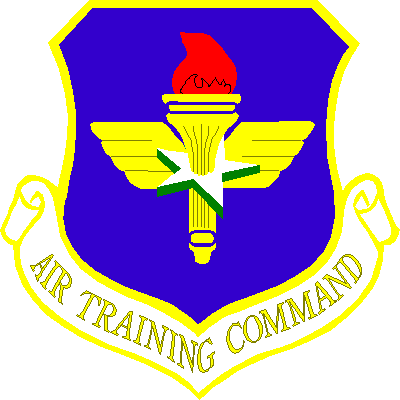 |
 UPT Phase I...
|
 |
 UPT Phase I...
|
![]()
![]()
Much to my chagrin, Phase I of my training was carried out at Howard County Municipal Airport, under the stern guidance of civilian contract instructors. The military instructors would not dirty their hands with us until we had passed this very basic test. The aircraft was a bare-bones Cessna 172, designated by the Air Force as a T-41A and officially named the Mescalero. The 30 or so hours of flight training at this facility was designed to separate out those of use who proved to be fundamentally incapable of operating a simple flying machine. This was more economical than placing us directly in twin-engine jet aircraft which are much more expensive to operate and much less forgiving of error. The picture below, the only one I could find, shows an elegant white paint job. The ones we flew were plain aluminum with flat black on the upper engine cowling.
| T-41 Pictures | |
|---|---|
 |
 |
| Static Display | Early morning over Howard County |
We learned the basic flying skills in this portion of the training: taxiing with a wind, taking off, flying a traffic pattern, and landing. We also did some steep turns, chandelles, and learned the basics of stalls. We generally did our flying in the early morning and spent the rest of the day back at the base in a classroom, where the academic component of the training had begun in earnest. This was also the time in which we had to go through parachute training, ejection seat training, and learn about flight physiology to prepare us for the T-37 which required all of the above.
We spent an entire day jumping off a six foot platform into a bed of gravel until a crusty old sergeant, who had jumped out of an airplane more times than I had gotten out of bed, was satisfied that we were falling and rolling correctly. Next was the parasailing - much cheaper and safer than actually allowing us to jump out of an airplane. Parasailing was pretty simple. You strapped on the parasail harness and a 900 foot rope was connected to the front of the harness. the other end of the rope was tied to the back of a pickup truck. Two people held the parasail up off the ground and, on the instructor's signal, the truck driver popped the clutch. After about three strides, the parasail filled and lifted you up off the ground. When you reached about 500 feet of altitude, the truck driver slammed on the brakes and allowed you to free-fall back to the ground where your fall and roll was graded. Everyone got three tries, but wanted more! I took a camera aloft with me, but the lens speed and film speed were not fast enough to freeze the motion, so the pictures aren't very good.
Next was training with getting out of a parachute harness on the ground in simulated wind conditions. The problem here is that if you parachute in any significant wind, the canopy does not collapse when you hit the ground, but continues to supply enough force to drag you across the ground. In rough terrain this is definitely life-threatening. Our simulated wind was our old friend the pickup truck. We strapped into a parachute harness which had a rope tied to the back of truck in place of the canopy risers. One laid down on the ground on one's back and on signal, the clutch again was popped. Once the truck was up to 25-30 mph, you had to trip the quick disconnects on the harness and free yourself.
The final part of the egress training was done with an ejection seat trainer. The T-37 used a "ballistic" ejection seat. In simple terms, this means that you are sitting on top of a blank 37mm cartridge which can supply enough motive force to move you and your seat up and clear of the aircraft, penetrating the canopy, if necessary. The trainer was quite simple. It consisted of a vertical rail about 40 feet high, an aircraft seat attached to the rail, and a suitable place to insert a blank 37mm cartridge. One strapped into the seat and on signal pulled the ejection handles. With an ear-shattering explosion, you were up at the top of the rail and an escapement mechanism lowered you down fairly gently. In retrospect, it was not much different from the "Big Shot" on the top of the Stratosphere Tower in Las Vegas (although the view from the latter was much better).
We had a number of courses in flight physiology, but the most important for purposes of moving us into the T-37 was the relationship between human bodily function and the partial pressure of oxygen. This training segment culminated in an altitude chamber "ride" in which we were all allowed to experience the total lack of sensate symptoms which is typical of even severe hypoxia. Having been convinced by that excursion that oxygen masks are are an essential part of the flying experience, we then were treated to an instantaneous decompression from sea level (well, Big Spring level) to 35,000 feet. Yes, indeed, a condensation cloud does form!